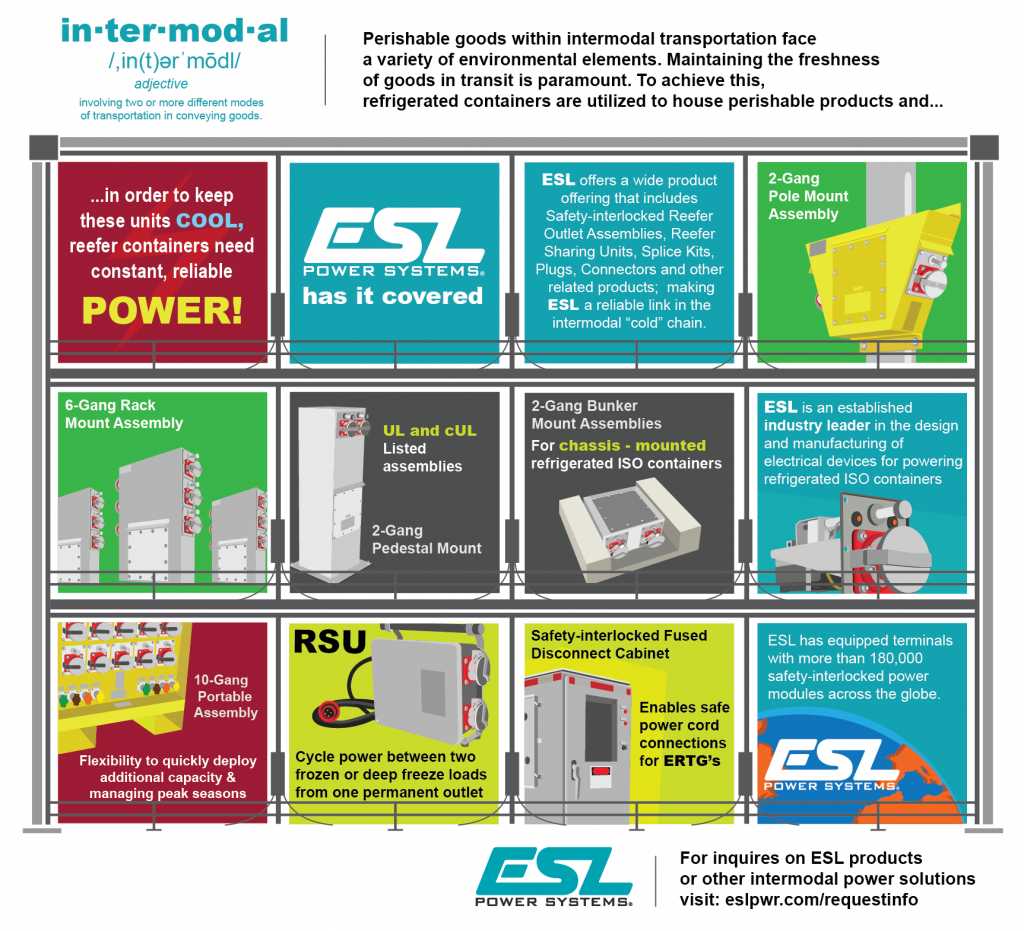
Increasing safety
While little has changed in the construction of the receptacles themselves over the years, ESL is constantly challenged to find new solutions that meet unique customer safety and operational requirements. Usually terminal operators have limited or no control over the maintenance and standards associated with male plugs on reefer container cables, the quality of which varies considerably. A male plug with water and salt ingress can “flash” outwards into the operator when the interlock actuator is engaged. In order to energize a receptacle from a safe distance, ESL designed a rear-actuated receptacle that removes this safety risk by requiring the operator to engage the actuator rod from behind the assembly enclosure, out of the way in case of a flashover. Since the development of our rear-actuated receptacle, ESL has installed systems at terminals in Philadelphia, Nairobi and Vancouver. In Philadelphia, ESL added LED lights on the rear of the enclosures so operators can see they have energized the correct receptacle.
Damage control
Properly treated and maintained, a safety-interlocked reefer receptacle is designed to last many years. The reality, however, is that equipment is often damaged through misuse. In our experience, the number one cause of receptacle damage is “drive-offs”, where the reefer is moved without first being disconnected. This will destroy a nylon or plastic ROA, but not a stainless steel one. Stainless steel ROA’s can be repaired by just replacing the receptacle or swapping out a safety-interlocked outlet from another ROA. In North America, the incidence of drive-offs is such that stainless steel ROAs should be considered as an industry standard. ESL also offers microswitches in the receptacle that signals whether a container is connected, regardless of whether the reefer is energized or not. This information could be sent to the terminal operating system (TOS) and an instruction to move a reefer could be blocked if it is still connected.
If you missed part of our series focusing on operating reefers at terminals efficiently click here.


